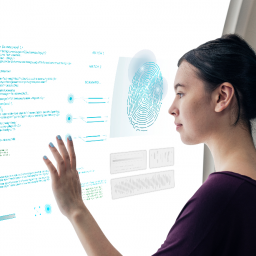Biometric authentication is no longer a futuristic concept—it’s an integral part of our daily interactions with devices, systems, and services. As of 2024, fingerprint recognition, facial recognition, typing biometrics and voice authentication have become commonplace in consumer electronics, corporate security, and financial services.
But the landscape is rapidly evolving. By 2025, advances in hardware, software, and artificial intelligence (AI) are set to transform biometric authentication into a more secure, seamless, and privacy-centric experience.
1. Multimodal Biometric Systems
Traditional biometric systems rely on a single method, such as fingerprint or facial recognition. By 2025, multimodal biometric authentication will become the norm. These systems combine multiple biometric identifiers—like face, voice, palm veins, and gait analysis—into a unified security model. This shift is driven by the need for stronger security in response to increasingly sophisticated attack vectors like deepfakes and biometric spoofing.
Multimodal systems significantly reduce the probability of false acceptances and false rejections. They can adapt dynamically, choosing the optimal biometric method based on environmental conditions, user behavior, or device constraints. For example, if a user's face is obscured by a mask, the system may default to voice or gait recognition instead.
2. Privacy-Preserving Biometrics
A key focus for 2025 is privacy-preserving biometric authentication. Traditional biometric systems store raw biometric data (like fingerprint images) in centralized databases, which are vulnerable to breaches. The emerging approach is to use techniques like homomorphic encryption, secure multi-party computation (SMPC), and biometric template protection.
Read the entire article on the Typing Biometrics Blog: https://typing.ai/blog/the-evolution-of-biometric-...


